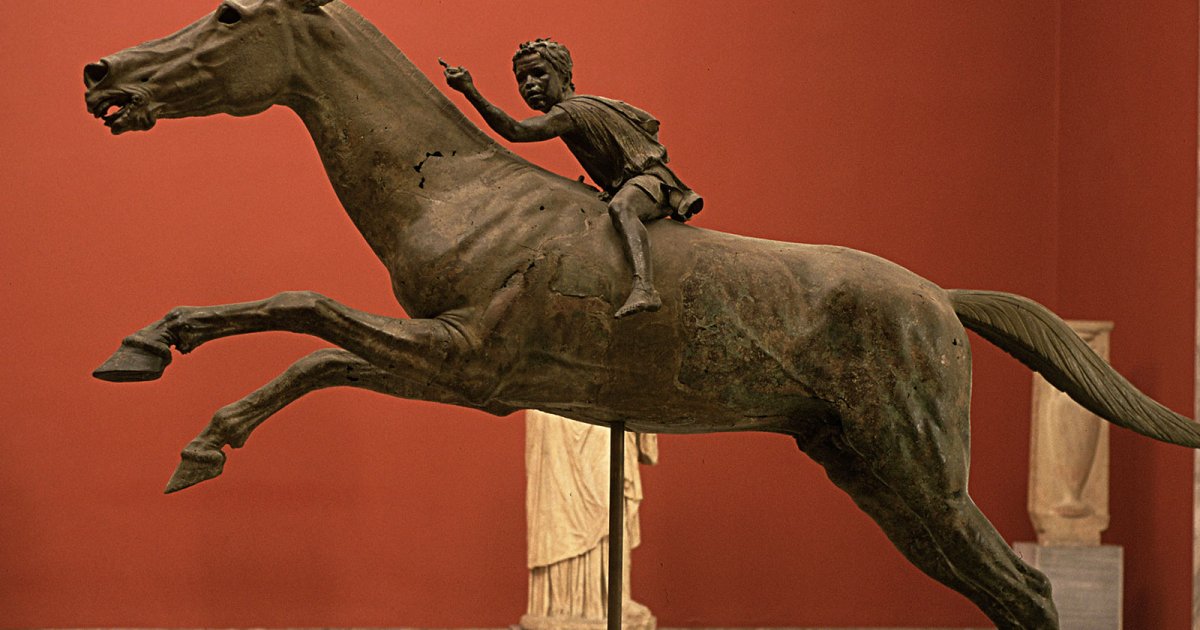JOCKEY OF ARTEMISION
 Language: English / USA
Language: English / USA
The awe-inspiring “Jockey of Artemision” bronze statue has virtually no equal. It was found in pieces, at different times, in the sea off Cape Artemision between 1928 and 1937 and subsequently pieced together.
The artist is unknown, although the work dates to around 140 BC. It is very different from the images of the equestrians you may have seen on the Parthenon frieze, and is an excellent representation of the expressive freedom of the last great period of Greek art, known as Hellenism, which developed in the opulent courts of the great monarchs that followed the empire of Alexander the Great.
The jockey is a boy aged around 12, riding bareback, his bare feet in the spurs. He is portrayed with his left arm raised to cue the horse to full speed, while he is whipping it with his right, turning his head to check on his rival in the final adrenalin rush of the race. The horse’s nostrils are dilated, its eyes wide open, its ears folded back, and muscles tensed to a maximum; it looks as if it is taking flight in a last desperate leap towards the finishing line.


